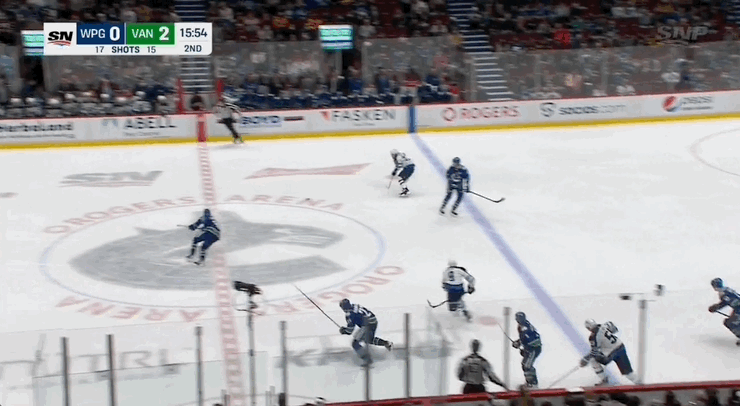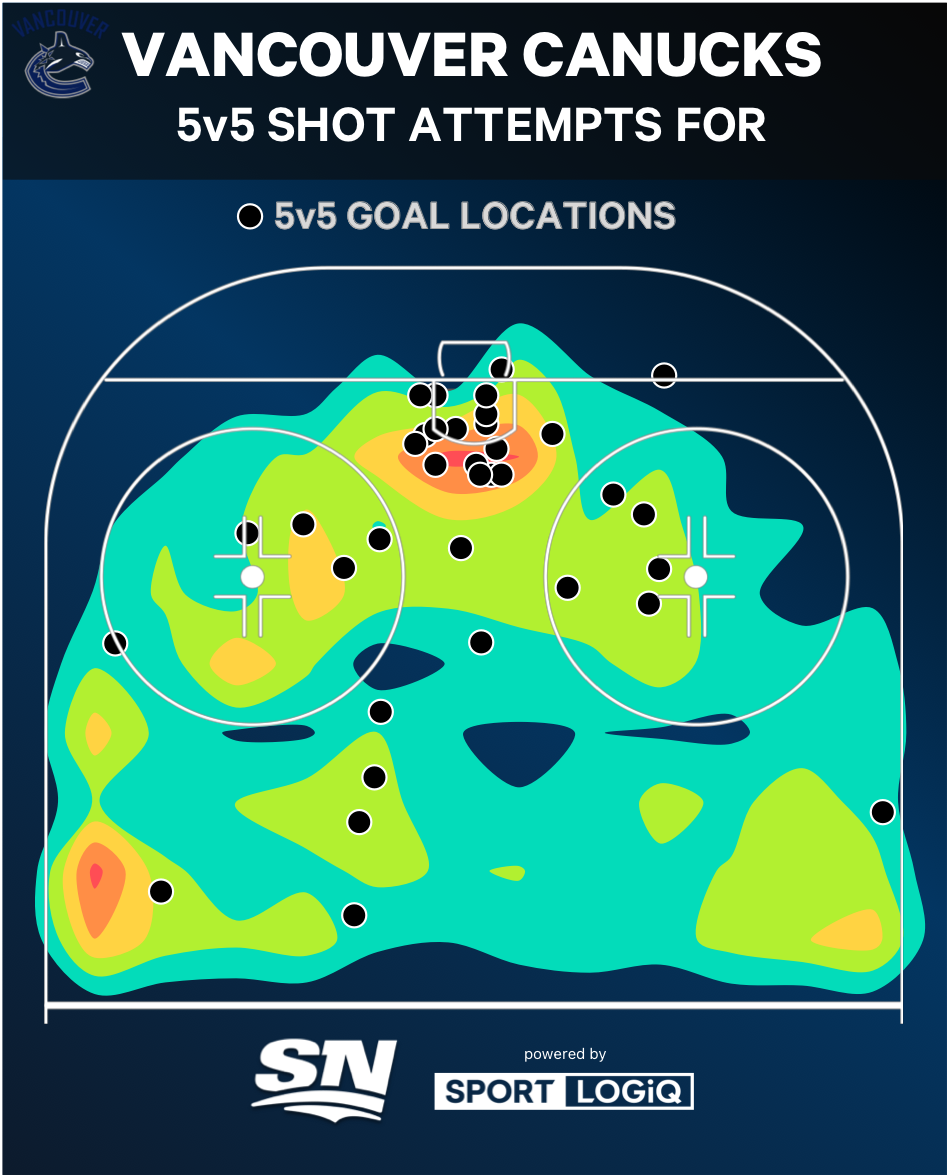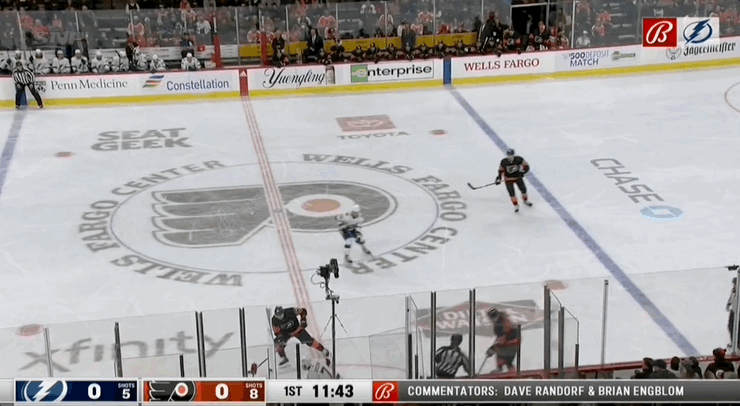It was a busy Monday in the NHL. Changes were anticipated in Vancouver for quite some time — the only question was how much would change, and when it would happen already. The answer (officially) came on Sunday night, with general manager Jim Benning, assistant general manager John Weisbrod, head coach Travis Green, and assistant coach Nolan Baumgartner all being relieved of their duties.
But the Canucks’ firings weren’t the only ones. On Monday, the Flyers also canned head coach Alain Vigneault and assistant coach Michel Therrien, after starting the season 8-10-4 in 22 games.
Why were these teams inclined to make changes now? Let’s take a look below the surface.
Vancouver Canucks
Everyone knew the situation was dire in Vancouver — except, it seemed, those in decision-making roles. But finally, after days and weeks of anticipating movement in the front office or behind the bench, both saw necessary changes.
The team’s weaknesses on the ice stemmed from both roster decisions and on ice play. Personnel, for example, has impacted their short-handed struggles — but it wasn’t all that contributed to its shortcomings. Nor was the penalty kill Vancouver’s only weakness, even though it was emphasized.
Vancouver’s even strength situation hasn’t been nearly as disastrous as last year. At 5-on-5 in 2020-21, the Canucks ranked second-to-last in their rate of shot attempts, slot attempts, and inner-slot shots against. Almost 40 per cent of the shots they allowed came from the slot.

This year, while they’re not among the top teams, they’re not bleeding shots as often either. While Vancouver may not be as rough defensively on the whole, there are still some weaknesses, like scoring chances allowed on the rush.

To pair with play in their own zone, the Canucks are a below-average team offensively. The only reason their goal differential at 5-on-5 doesn’t rank too poorly in the league is because of Thatcher Demko’s play between the pipes.
The Canucks’ shot rate for is actually 15th in the league with 58.9 attempts per 60. While quantity is less of an issue, quality is; only 31.3 per cent of their shots come from the slot which is the fourth-worst in the league. Where they really struggle, similar to the other end of the ice, is in rush shots — they’re fourth from the bottom in generating scoring chances off the rush. All together, Vancouver’s expected goal rate is a lowly 2.19 per 60, which puts them 28th in the league.

And besides their 5-on-5 play, they can’t count on their power play to be a reliable source of offence, either.
The answer is a mostly new-look coaching staff, with Bruce Boudreau taking the lead and Scott Walker joining as an associate.
Boudreau won’t just change their systems and help them be more aggressive in the offensive zone — he’ll boost vibes, which this team desperately needs. And ideally, that’ll help revitalize the game of some of their best, like Elias Pettersson.
Shaw will run the defence, a job he managed quite well in Columbus. But interestingly, he won’t be handed the reins of the penalty kill after building an aggressive power kill with his former team. Instead, that will be Walker’s domain.
As much influence as this coaching staff will have, the Canucks’ weaknesses run deeper which may give their new interim general manager quite a bit of work to do.
Philadelphia Flyers
Going into 2021-22, the Flyers’ weak points appeared to be in net, with the team relying on Carter Hart and Martin Jones to backstop them up the Metropolitan Division standings.
Against all shot attempts turned his way, Hart allowed a league-worst 14.5 goals above expected in all situations last season. Jones, on the other hand, in his last season in San Jose, allowed 4.6 more goals than expected. This season, neither goaltender has really been the problem. Hart’s stopped 3.7 more goals than expected ahead of the coaching change, and even Jones has been playing better than anticipated.
But the team’s struggles in front of the crease really forced the change, after they slipped to eight straight losses before Monday night’s ninth consecutive.
The Flyers’ 5-on-5 play, which former head coach Vigneault managed, was one of their greatest weaknesses.
It starts with how they’ve allowed entries against into their zone. They’re a bottom-10 team in allowing controlled entries against and conceding scoring chances off those entries. Philadelphia’s team defence is exposed to slot shots off the rush against; their rate of attempts allowed is the fourth-highest in the league.

All together, Philadelphia conceded 63.1 shot attempts per 60 minutes in their first 22 games, which put them 26th in the league. And the quality of those shots — 23.2 slot attempts per 60 — moved them even lower to 29th in the league. Before shots were even taken, they were also a bottom-10 team in passes against in the offensive zone.

Between the shot quality and pre-shot movement ahead of those attempts, the Flyers’ earned an expected goal rate against of 2.91 per 60, which landed them 28th in the league.

On top of that, they didn’t have the offence to back up their defensive weaknesses — not at even strength (where they ranked 27th in expected goals for) or on the power play (23rd in xG for). So, that directly led to Vigneault’s and Therrien’s (who ran the man-advantage) dismissal.
Assistant Mike Yeo is now taking over as head coach on an interim basis. Defence was clearly a weakness of this group, which he’s been in charge of, along with the penalty kill. But it was Vigneault’s system being executed — a system that showed its flaws before he even started behind the bench in Philadelphia. So, in the interim, Yeo has the opportunity to adjust their tactics and win back the locker room after the head coach appeared to lose it.
Data via Sportlogiq
[relatedlinks]





COMMENTS
When submitting content, please abide by our submission guidelines, and avoid posting profanity, personal attacks or harassment. Should you violate our submissions guidelines, we reserve the right to remove your comments and block your account. Sportsnet reserves the right to close a story’s comment section at any time.